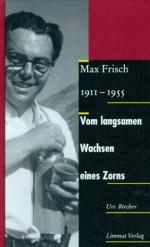|
This section contains 6,056 words (approx. 21 pages at 300 words per page) |

|
SOURCE: Lokke, Kari E. “Bluebeard and The Bloody Chamber: The Grotesque of Self-Parody and Self-Assertion.” Frontiers 10, no. 1 (1988): 7-12.
In the following essay, Lokke discusses thematic and stylistic similarities between two variations of the Bluebeard folktale: Angela Carter's The Bloody Chamber and Frisch's Bluebeard.
Like many fairy tale motifs, the Bluebeard legend is grotesque in essence. This tale of the wealthy, seemingly chivalrous aristocrat who murders seven young brides and inters them in his cellar brings together violence and love, perversion and innocence, death and marriage in an unsettling combination. The intermingling of seemingly incongruous elements and the juxtaposition of opposites challenge audience expectation and habits of thinking in a manner typical of the grotesque as defined by theorists as varied as Wolfgang Kayser and Mikhail Bakhtin.1
As readers we expect the grotesque in fairy tales, perhaps because these stories are displaced to a never-never land beyond the demands...
|
This section contains 6,056 words (approx. 21 pages at 300 words per page) |

|


